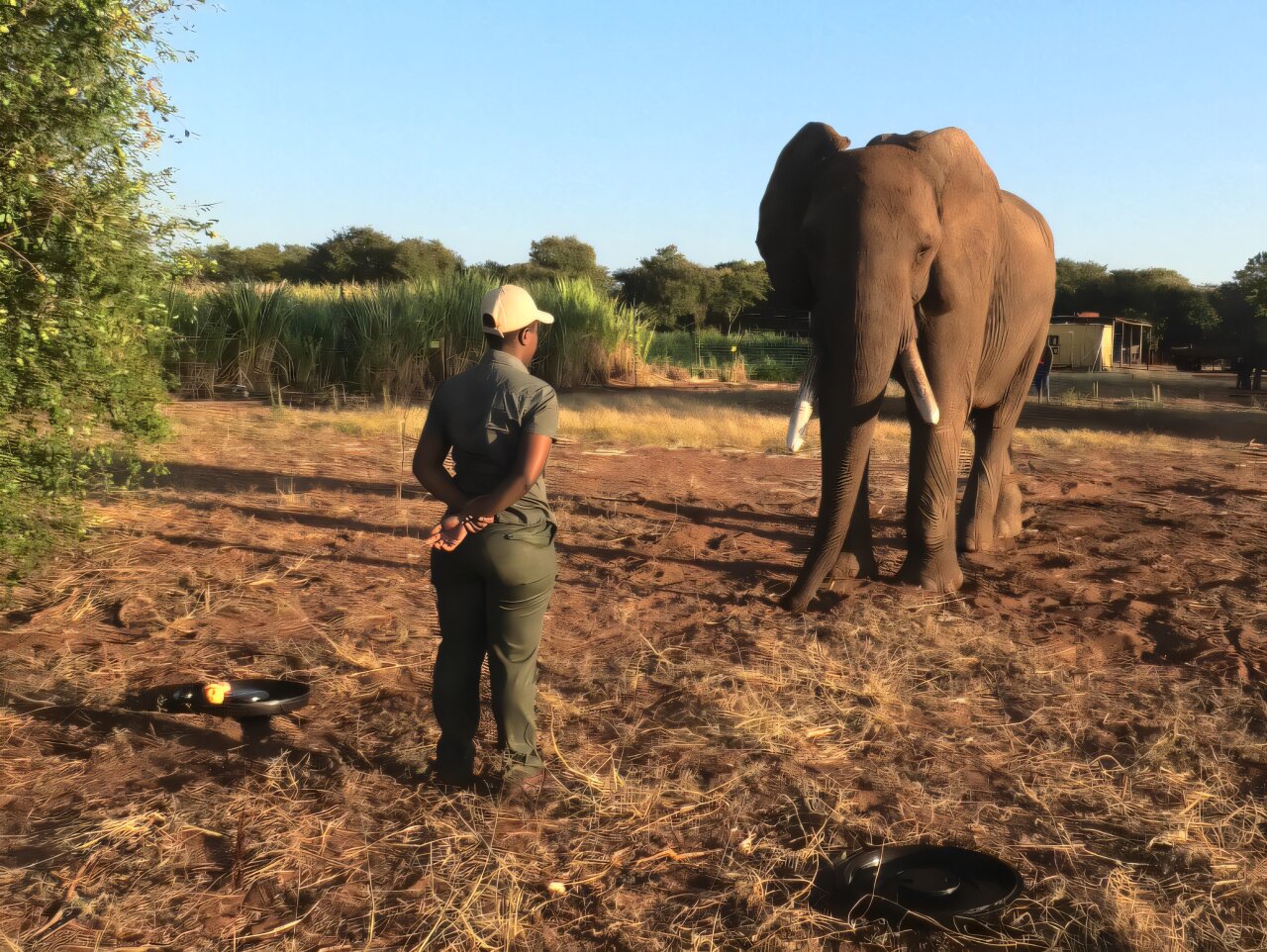
Elephants gesture with an intention to communicate their desires, study finds
How did your country report this? Share your view in the comments.
Diverging Reports Breakdown
Elephants gesture with an intention to communicate their desires, study finds
Elephants gesture with an intention to communicate their desires, study finds. Researchers presented 17 semi-captive African Savannah elephants in Zimbabwe with two trays: one containing six apples (the desired item) and the other empty (the non-desired item) Their attempts to communicate with the experimenters were then recorded across three different outcomes. The elephants displayed clear goal-directed intentionality, as their gestures were directed only towards an attentive human or the object they desired, never towards an irrelevant object. They were more likely to continue gesturing when their goal was only partially met, such as receiving some, but not all, the apples, than when they were fully satisfied. Researchers encourage future research to explore intentionality in other highly social species with a large repertoire of signals or gestures to deepen our understanding of how this capacity may have evolved. The findings were published in Royal Society Open Science (2025) DOI: 10.1098/rsos.242203.
Elephants used distinct gesture types to communicate that they want apples. Credit: Royal Society Open Science (2025) . DOI: 10.1098/rsos.242203
Humans have long mastered the art of expressing their goals and needs through both language and gestures. A similar behavior is also observed in non-human primates, who use complex gestures to convey what they want, but does the use of deliberate gestures extend beyond primates to other members of the animal kingdom?
A recent study provided the first-ever evidence that, in the presence of a visually attentive audience, elephants are capable of using a wide range of gestures to convey their desires.
The findings were published in Royal Society Open Science.
To test whether elephants intentionally gesture to communicate their goals, the researchers presented 17 semi-captive African Savannah elephants in Zimbabwe with two trays: one containing six apples (the desired item) and the other empty (the non-desired item).
Their attempts to communicate with the experimenters were then recorded across three different outcomes. The first scenario was when they successfully communicated, and the experimenter gave the elephant all six apples. The second was when their goals were not met, and they were given the empty tray. The third was when their goals were partially met, and they received only one apple from the tray.
During this entire process, it was observed that elephants displayed clear goal-directed intentionality, as their gestures were directed only towards an attentive human or the object they desired, never towards an irrelevant object.
When their goals were not being met, the elephants got creative and came up with new gestures to convey their message instead of repeating the same actions.
Predicted mean number of gesture tokens used by the subjects before and after item delivery in the three experimental conditions. Credit: Royal Society Open Science (2025). DOI: 10.1098/rsos.242203
Intentionality of communication is seen as a factor that distinguishes human language from other forms of animal communication. Our words and gestures are directed towards someone to achieve a certain goal, which can be as simple as saying hello to more complex situations, such as negotiating rent.
Scientists often categorize intentionality into different levels of complexity. The simplest form is zero-order intentionality, referring to reactions produced in response to stimuli such as pain or touch. The next level is first-order, or goal-directed intentionality, where communication is used deliberately to influence someone’s behavior. The most complex is second-order intentionality, where communication is aimed at changing someone’s mind.
While several studies have shown that non-human apes use gestures with first-order intentionality, very little was known about similar behavior in non-primates—until now.
Percentage of novel or repeated gesture types used by the subjects during post-delivery in the three experimental conditions. Credit: Royal Society Open Science (2025). DOI: 10.1098/rsos.242203
Given the animals’ complex social structures and advanced cognitive abilities, the researchers chose to investigate their ability to gesture with intentionality.
The researchers observed 38 different gesture types and a total of 313 gesture tokens—each individual instance of a gesture being used—from the 17 semi-captive elephants participating in the research.
The elephants used gestures to communicate their desire to get the apples only when a visually attentive experimenter was present near them.
They were more likely to continue gesturing when their goal was only partially met, such as receiving some, but not all, the apples, than when they were fully satisfied. Furthermore, the elephants elaborated their gesturing when their goal was not met, compared to when it was fully met.
This study establishes the existence of goal-directed communication in semi-captive elephants. The researchers encourage future research to explore intentionality in other highly social species with a large repertoire of signals or gestures to deepen our understanding of how this capacity may have evolved.
Written for you by our author Sanjukta Mondal, edited by Sadie Harley, and fact-checked and reviewed by Andrew Zinin—this article is the result of careful human work. We rely on readers like you to keep independent science journalism alive. If this reporting matters to you, please consider a donation (especially monthly). You’ll get an ad-free account as a thank-you.
More information: Vesta Eleuteri et al, Investigating intentionality in elephant gestural communication, Royal Society Open Science (2025). DOI: 10.1098/rsos.242203 Journal information: Royal Society Open Science
Source: https://phys.org/news/2025-07-elephants-gesture-intention-communicate-desires.html
